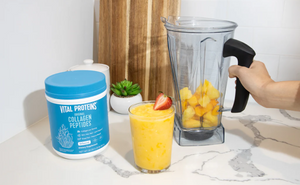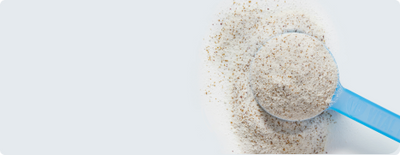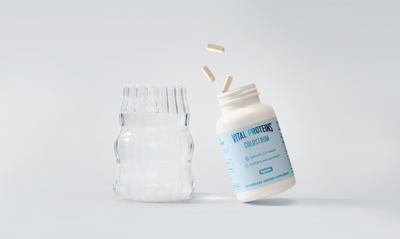Shane Wallen, Major League Head Strength and Conditioning Coach for the Chicago Cubs, was promoted to major league head strength and conditioning coach this January, and is in his second season with the organization. He joined Chicago following three seasons as a strength coach in the NFL, including 2018 as an assistant strength and conditioning coach with the San Francisco 49ers.
___
If only it were that easy, anybody could train MLB athletes. Before you can be sure how to appropriately train any athlete, you first need to look at the physical demands of their sport. But what exactly does that mean?
Have you ever paid attention to the game itself, how the players move, what distances they cover, at what speeds, what dominates the game from a biomotor, biodynamic and bioenergetic quality standpoint and the work-to-rest ratios within the game? From there you can begin to breakdown each individual athlete, identify what they’re good at, their strengths (which is probably a big reason why they’ve made it to Major League Baseball); but also identify their weaknesses, mechanical and technical flaws through objective testing measurements/screenings.
Once we’ve done all of those things, we can begin the processes and discussions of exercise selection and what corrective exercises should be used by the factors mentioned above. Below, we discuss this further.

Note: This article has been made available for informational and educational purposes only. It is not intended to be a substitute for professional medical advice, diagnosis, or treatment. Always seek the advice of your physician or another qualified health provider with any questions you may have regarding a medical condition. Your licensed healthcare professional can best provide you with the diagnosis and treatment of any medical condition and assist you as well in deciding whether a dietary supplement will be a helpful addition to your regimen.
How To Train Like An MLB Athlete: Where To Start
Time of year is a relevant topic when discussing our athletes' programs. Professional baseball players (pre-COVID era) play 162 regular season games (not including playoffs) per year throughout the span of the 6 month season. That’s essentially a 3-4 hour game everyday, with an off-day sprinkled in here and there every 10-15 days. In saying that, I most definitely am not going to train my athletes in-season like I train them in the off-season due to the physical and mental demands accumulated throughout the season.
Training age is another important consideration in all athletes' continued development and identifying this early on is key in the ability to create physical adaptations. This factored with time of year will tell us how general or how specific our training will be. For example, if we’re in the middle of the season, our focus in the weight room will never be hypertrophy or high volume TUT (time under tension) training because that could potentially put our athletes at risk of injury. Instead, we use those methods in the off-season and resort to lower volume, higher intensity strength and power development methods in-season to minimize fatigue and muscle strain, while hopefully maintaining our increased power and strength qualities (remember these dominate the game of baseball!).
Related Articles
How To Train Like An MLB Athlete: Creating A Workout Plan
Baseball is a sport dominated by acceleration, max speed, power, strength, rotation, rate of force production/reaction time and velocity. From the training side, we have to look at these different qualities and try to train them and develop them appropriately throughout the calendar year.
Acceleration
For baseball players, acceleration starts and ends pretty quickly, usually 0-20 yards in my experience, 20 yards being the longest but usually stopping prior to this due to the nature of the sport.
So how are we able to improve this quality? Well, we have to accelerate or put our bodies into the optimal acceleration angles and positions of acceleration under load or a changed environment to promote adaptation. Start here:- Hill Sprints: Promote forward lean/optimal acceleration technique and frontside lower limb mechanics + rear leg hip extension.
- Rear Resisted Sled Sprints: Promote forward lean and horizontal force production (acceleration angles/positioning) and longer ground contact time (you want to spend more time on the ground in acceleration so that the plant leg can extend for optimal force development/transfer up and down the kinetic chain).
Max Speed
Once an athlete comes out of acceleration and his torso/hips are stacked, he is in a more upright position. At this point, the ground contact times should be much less than acceleration and the forces being put into the ground are much more vertical in nature. Again, to train this, we have to achieve max speed during running. Start here:
- Sprints: A fluid transition from acceleration into max speed is important and this must be practiced, so let's extend that acceleration out from 20 yards to 30 yards to start so you can start to feel that transition and what it feels like achieving top speed for about 10 yards. (Remember, sprinting is the most strenuous exercise you can do to your body, so be mindful of progressions and not overdoing it.)
- Game Specific Speed Development: I don’t know about you, but when I watch a baseball game, I see players flying around the bases, chasing down balls in the gaps, accelerating and diving for a ball up the middle, right? So, in order to prepare our guys to do those things in a game day-to-day, they have to be exposed to it prior to the game; and again, progression and monitoring workloads/volumes are the most important factors here. So, if you see your buddy at the gym and he’s a baseball player and he’s on the treadmill doing a 2 mile jog, do him a favor and tell him to get off the treadmill and go SPRINT! (You don’t train for the 100 meter dash running a marathon do you??)

Power + Strength
Let’s be honest, baseball is very much a skill and technical based game, but if you have the skill and technical side covered, and you also have the strength and power to support it, you’re probably going to hit the ball a long way and throw pretty hard. Start here:
- Power: When we train for power, the "load on the bar", or whatever technique you are using, tends to be lighter because we want to focus on the velocity of the movement (usually between 30-60%). So take any exercise like a back squat or a trap bar deadlift or a split squat and focus not on just the quality of movement, but on the speed of the movement as well; this will require you to lighten the load on the bar, with the repetition range for power between 1-5 reps.
- Strength: Generally speaking, strength development occurs between 70-100% of your 1RM (I hate using 1RM’s because they fluctuate daily due to external factors, but you get my point). With that said, if you're in a strength emphasis block we’re still emphasizing movement quality but with the increased load, our attention shifts to continually being able to increase our strength reserve and maturing those strength qualities throughout the training cycle and seeing how those strength gains can then influence other physical qualities and tissues/structures in your body. Strength can mean a lot of things, it can be completing a heavy single on a back squat or it can be finishing off the cycle with a new 8RM (rep max) or 5RM. That said, the volumes for strength can range between 1-10, 1-3 being max strength, 4-6 being general strength and 8-10 being strength endurance.
Rotation
Baseball is very much a rotational sport. These guys have the ability to rotate and produce velocities on the baseball like no one else in the world can, which is also why they are big leaguers. With rotation being such a huge part of the sport, of course, we have to train rotation and also the ability to resist rotation or “anti-rotation”. Start here:
- Medicine Ball Training: We throw medicine balls a lot with our big leaguers. Why? Because aside from throwing a baseball or weighted balls, it can be a great teaching tool regarding lower half sequencing and power development. Pitchers don’t throw hard because they have strong upper bodies and hitters don’t hit home runs because they’re “jacked”, it starts with the lower half and how much force is generated on foot strike (along with trunk/hip separation) and how that travels up the chain and finishes through the arm or upper half. So we learn to throw lighter and heavier medicine balls to train explosive strength and power qualities in our athletes. And if we are targeting those two mentioned qualities, the reps per set will range from 1-3 reps.

Rate of Force Production, Elasticity & Reaction Time
These concepts go hand-in-hand with speed and acceleration development and the game of baseball. For instance, the guy who is more elastic and reactive usually can produce force faster and will likely be able to get to a ball that’s going up the middle for what would normally be a base hit or a ball in the gap that would normally be a stand-up double. We train these qualities during acceleration and speed development but also through plyometric training (jump training). Start here:
- Depth Drops: Start with dropping down from a 12-24 inch surface. Why? Because you must learn how to absorb load appropriately before you can transfer it up the chain and successfully achieve dynamic movements. There are double leg and single leg variations of depth drops that need to be completed prior to progressing.
- Box Jumps: Most of you probably know what a box jump is, but in case you don’t, find a 12-24 inch box and jump and land on top of it. Now the loading (descent) should be something you’ve mastered by now with the depth drops. The concentric portion of the movement is the extension of the ankles, knees and hips, followed by the flight phase (leaving the ground) and then landing once again on top of the box. There are also double leg and single leg variations with box jumps as well, but we will need these to be progressed appropriately and safely.
- Depth Jumps: These are very intensive plyometrics and should not be completed unless the previous two plyos have been mastered. With depth jumps, you will drop from a 6-18 inch box, absorb those landing forces (just like the depth drops) and then re-accelerate your body upward, extending the ankles, knees and hips, entering the flight phase (just like the box jumps) and land on top of another box. These jumps will eventually have an elastic/reactive component when the athlete is ready which will lead to shorter ground contact times and also more stress on the athletes tissues/structures.
- Continuous Jumps (Reactive + Elastic): Once the athlete has mastered the above plyometrics, they can move on to what we call continuous jumps. These kinds of plyometrics are also very intensive and stressful on the athletes tissues and structures, so progress accordingly. These plyos are characterized by short ground contact times and very high rates of force development and require adequate lower leg stiffness qualities. Examples of these jumps would be pogo jumps, continuous vertical jumps or continuous broad jumps or continuous hurdle hops.
- Sport Specific Plyos: These tend to be the most intensive plyos and will likely resemble movements and positions that the athlete accomplishes during the game. We tend to isolate these movements in training to develop a player's weakness or develop a certain physical quality they are lacking. We will also complete such plyos as we get closer to spring training, and the season, in order to prepare our athletes' tissues and structures for the reoccurring stressors of the game.
How To Train Like An MLB Athlete: Final Things To Note
At the end of the day, you don’t have to be a Major League Baseball player to understand what your given sport demands physically, what your training goals are or how to successfully achieve those goals. However, all of these things are vital to your personal successes or the success of your athletes.
Understanding what you’re training for and why, when the right time to adjust programming emphasis, alternate exercises, change volume and load schemes is key. How and when you go from general to specific training throughout the calendar year for different sports or different personal goals is also important. These are all questions that I refer to when training MLB athletes, but these are also questions that should be considered when training any population — athlete or not.















